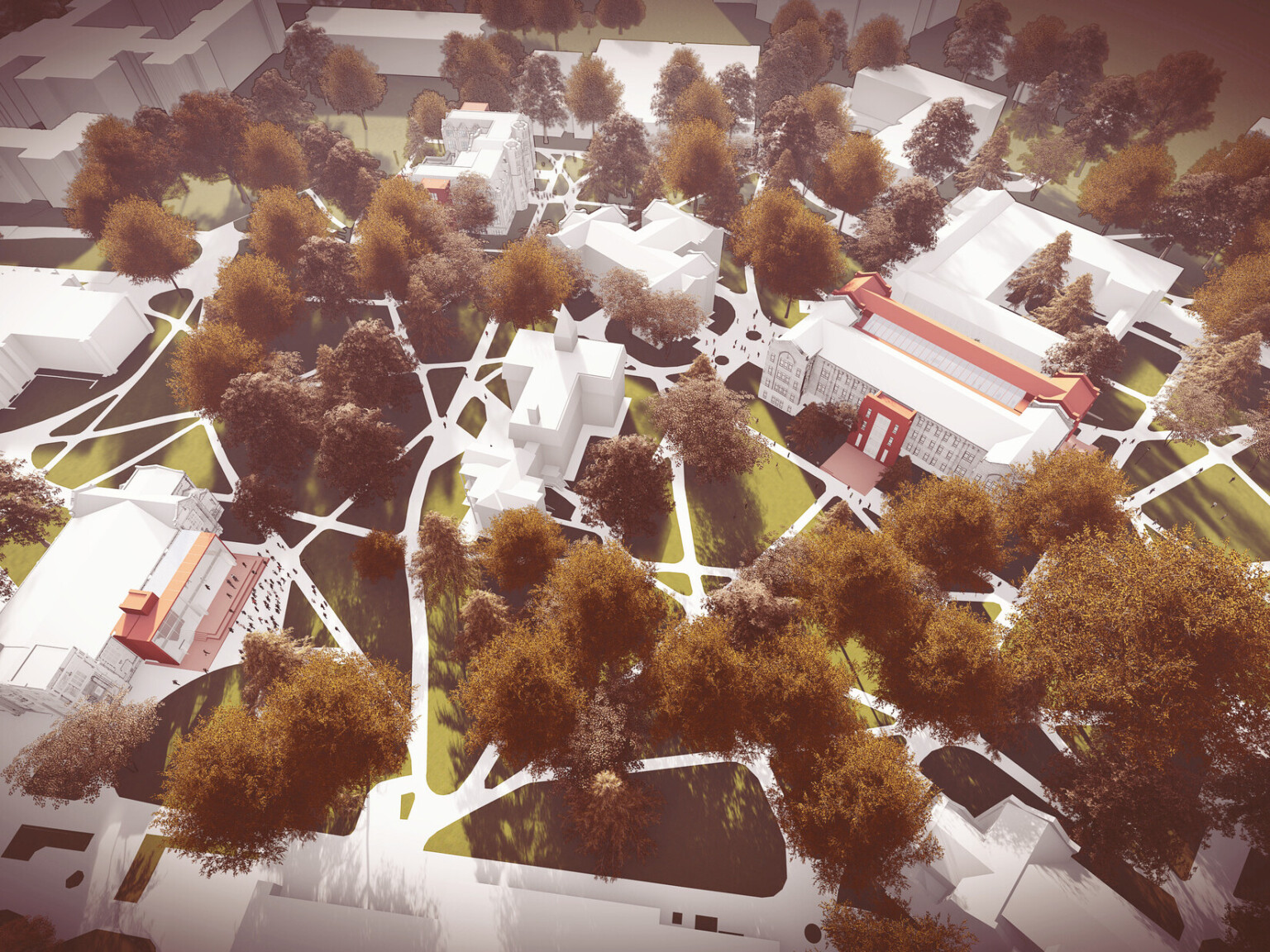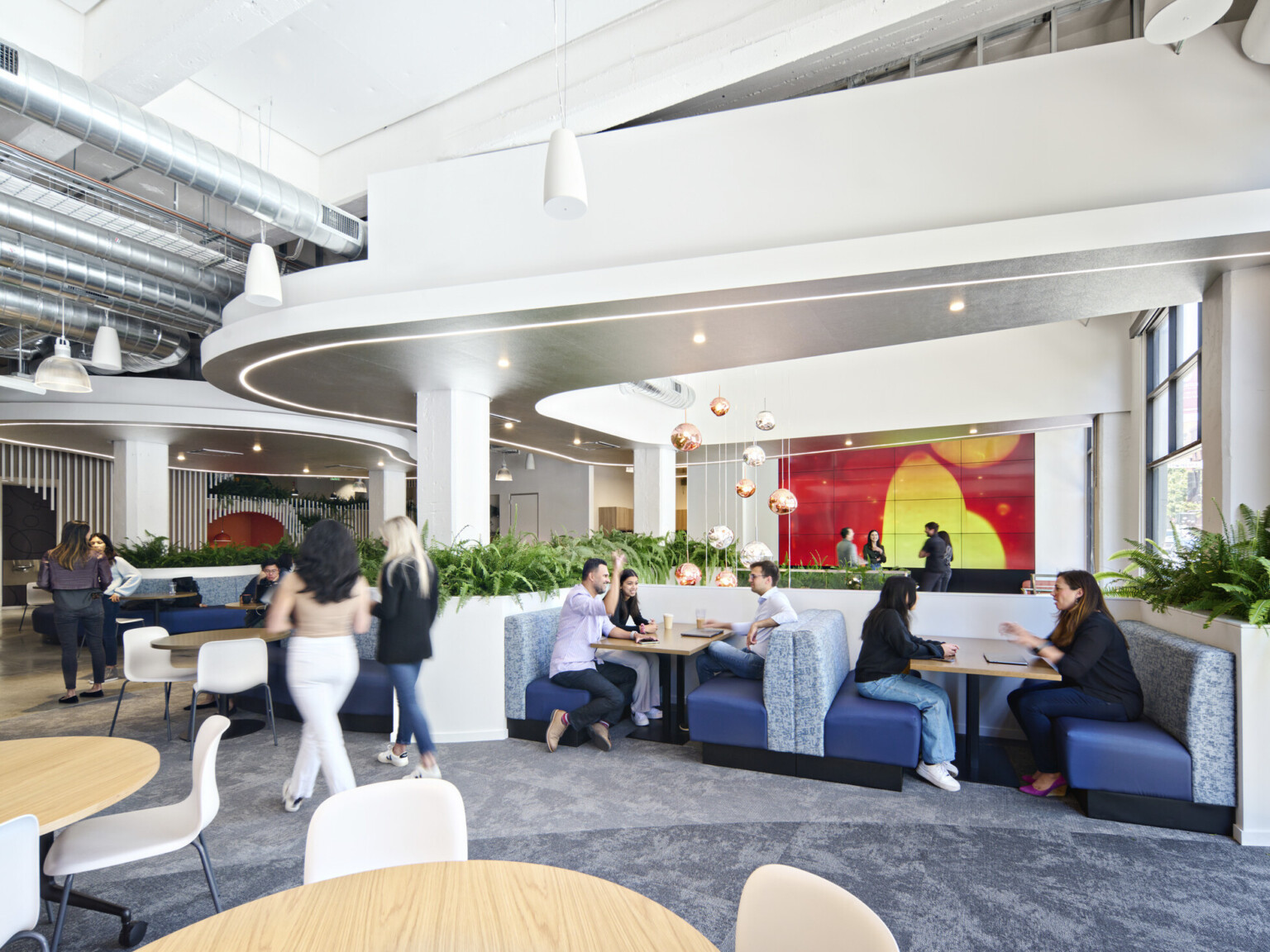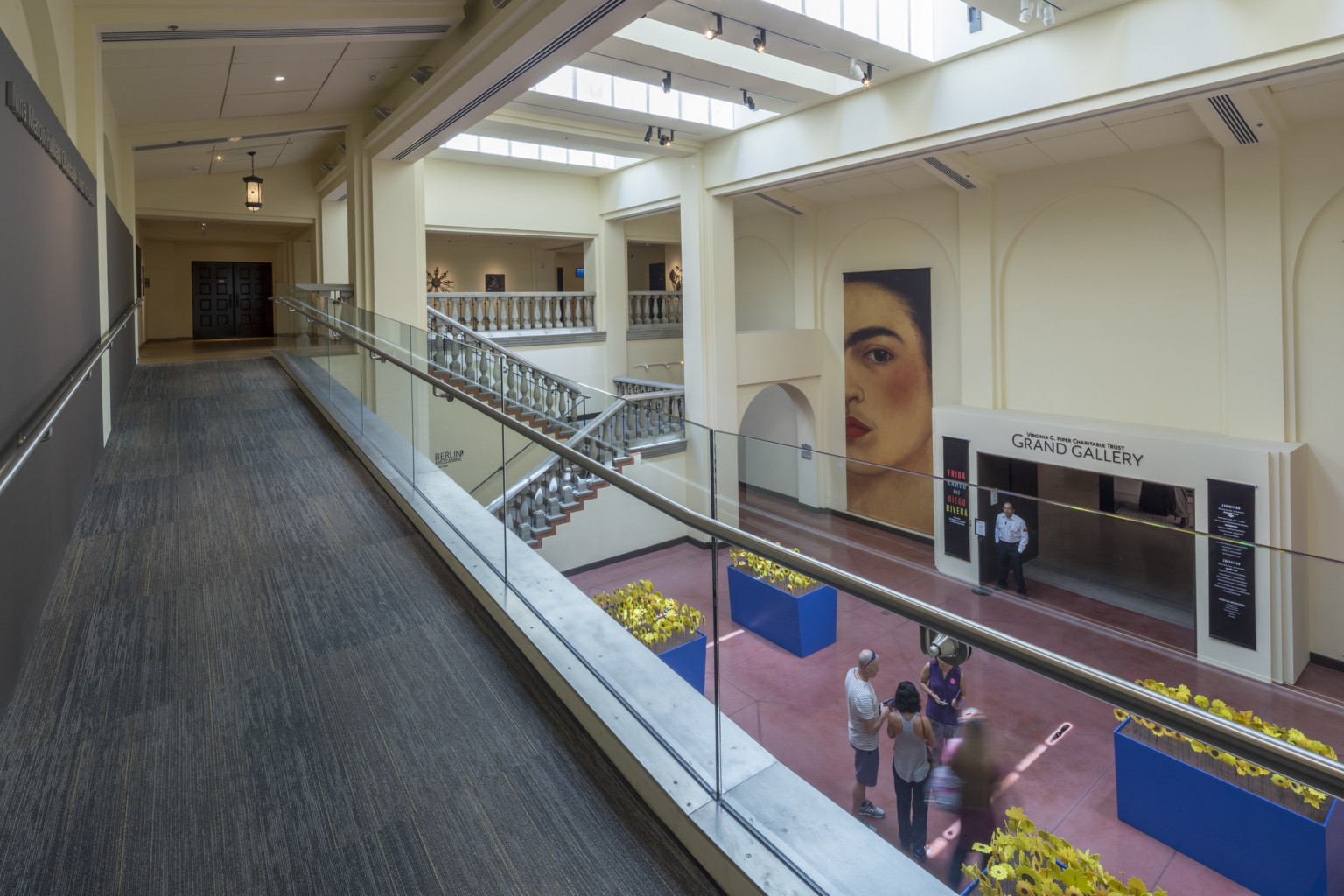
Engaging New Audiences Through Design at the Heard Museum
We arrive at the Heard Museum and it has never been more evident that the mission we set out to achieve nearly three years ago with the museum – to engage new audiences and celebrate contemporary Native American artwork – has been accomplished. The entry court is packed with visitors who’ve come to see the new exhibit Dear Listener by Nicholas Galanin, an artist the New York Times called a “standout,” while the music of experimental hip-hop group Shabazz Palaces echoes from inside. The vibrant, celebratory spirit of First Friday and the Heard Museum are in full harmony.
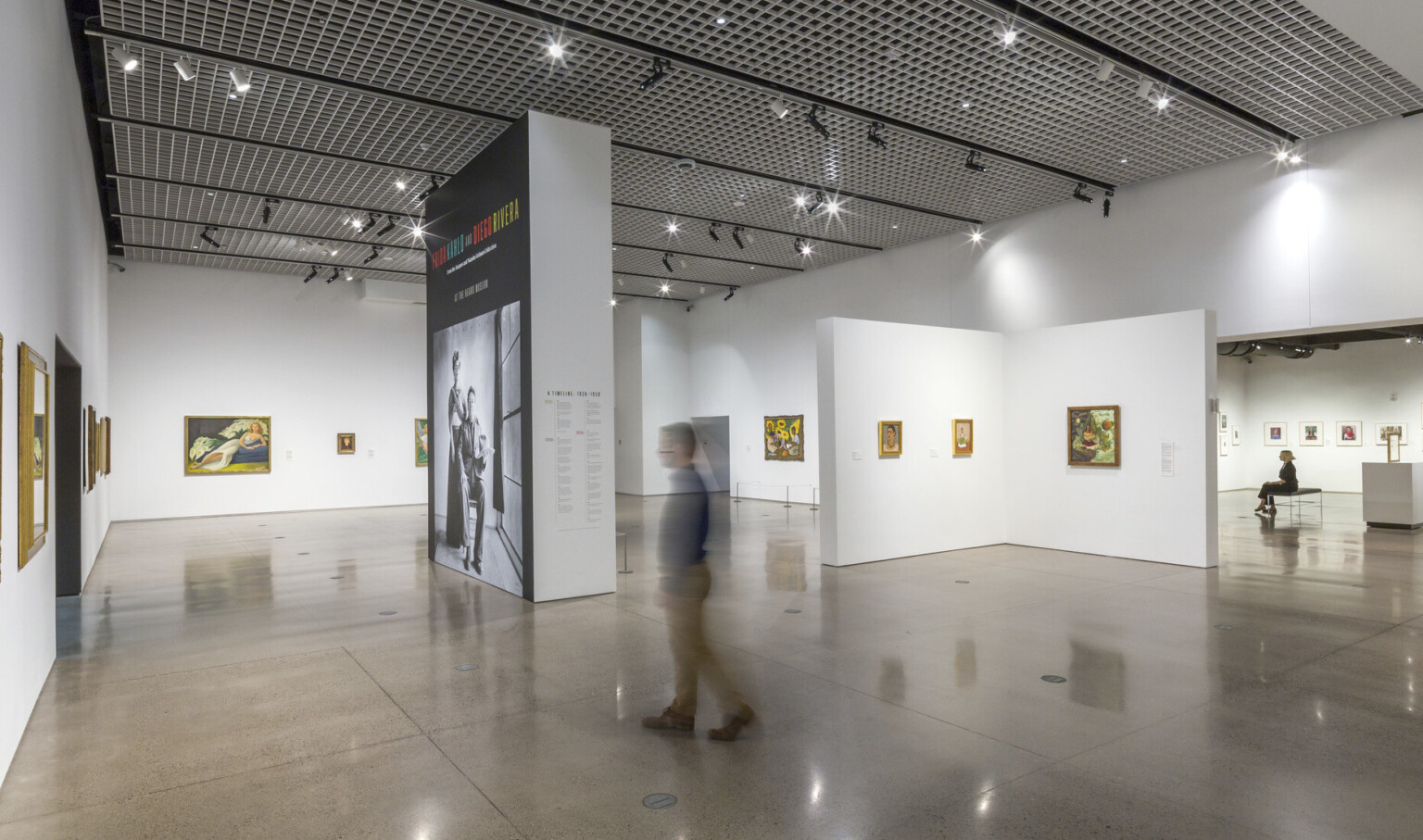
In 2015, our team began working with the Heard Museum on the design of a new gallery with the goal of renovating existing, underutilized spaces of the museum, to accommodate traveling exhibitions of the highest international caliber. Known for its world class collection of American Indian Art, the Heard Museum has always been a must-see destination for visitors to Phoenix. As we began to discuss the museum’s plans, it was clear the Heard was looking to engage new, younger, and more diverse audiences, as well as provide a space for contemporary Native American artists to effectively display their work. The new traveling exhibit gallery would be the critical element in addressing both goals to establish a deeper connection to the community.
Our multi-disciplinary team embarked on a design challenge that wove together buildings constructed over six generations of various construction types, building systems, and spaces at multiple floor levels into a single unified space, now known as the Grand Gallery. To create this enhanced gallery space, our team established a number of design principles, considering factors like scale, environmental conditions, flexibility, and adaptability, to help guide our design approach. The result is a resoundingly successful gallery space that, since its opening, has hosted three major traveling exhibitions, and has seen a remarkable increase in attendance and membership as a result.
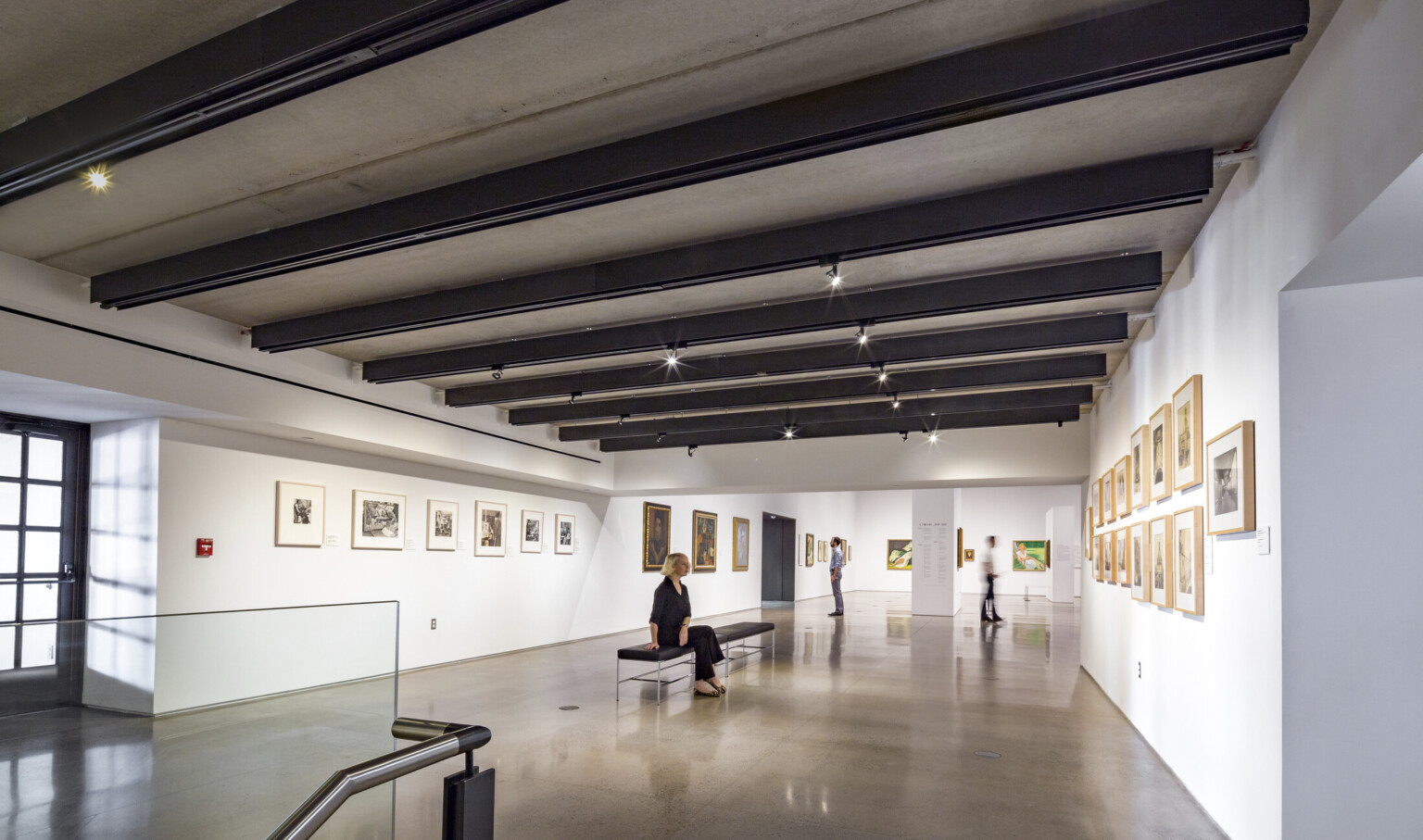
Flexibility for Various Exhibits
Our design team recognized that the success of the gallery would depend on the Heard Museum’s ability to accept a wide range of exhibit types, from 2-dimensional paintings and photography, to large scale sculpture and artifacts, to multi-media art and sculptures. Working with the owner’s team, we considered a wide variety of exhibit scenarios, and executed our design approach to accommodate a wide range of potential exhibits.
Structurally, we designed a new floor to unite levels, which had previously represented a 4-foot change in elevation. This provides visitors with a single level to experience the gallery without the need for ramps or stairs, which were a previous impediment to the visitor’s experience. New openings between rooms nearly 40 feet in length unite previously separated spaces, which had been constructed 30 years apart, with new structural supports concealed behind the white walls of the gallery. This gives curators far more flexibility in orchestrating experiences for visitors, who can now circulate freely around the gallery and experience the work in a variety of ways. In addition, large works up to the size of a car can be suspended from the ceiling through a new structural grid concealed above the open grid ceiling.
Adjustable gallery lighting further supports this flexible model, accommodating a wide variety of exhibit types. Provided through a series of tracks, this gallery lighting strategy allows the lighting positions and fixture types to be easily tailored to each exhibit.
Scale for Maximum Impact
For traveling exhibitions there is a sweet spot to attract major shows, which is between 6,000 and 7,000 SF. The largest contiguous space the Heard Museum had prior to the renovation was 2,500 SF. As our team evaluated the existing space, we carefully looked at re-packaging a central service core consisting of an electrical room, audiovisual, information technology infrastructure, and restrooms into a very compact form, which made room for a contiguous 6,500-SF space. Our design approach leveraged existing building systems and plumbing infrastructure, and re-organized the surrounding spaces to maximize the amount of useful gallery space. For the renovation, our team faced limitations with the existing ceiling heights. After conducting careful site investigations, we devised a strategy to maximize the perceived height in locations where the existing structure was very low. Our design strategy exposed the existing concrete floor structure above, and worked hand-in-hand with our integrated engineering and lighting design team to devise a minimal track lighting system, which also doubles as the ceiling.
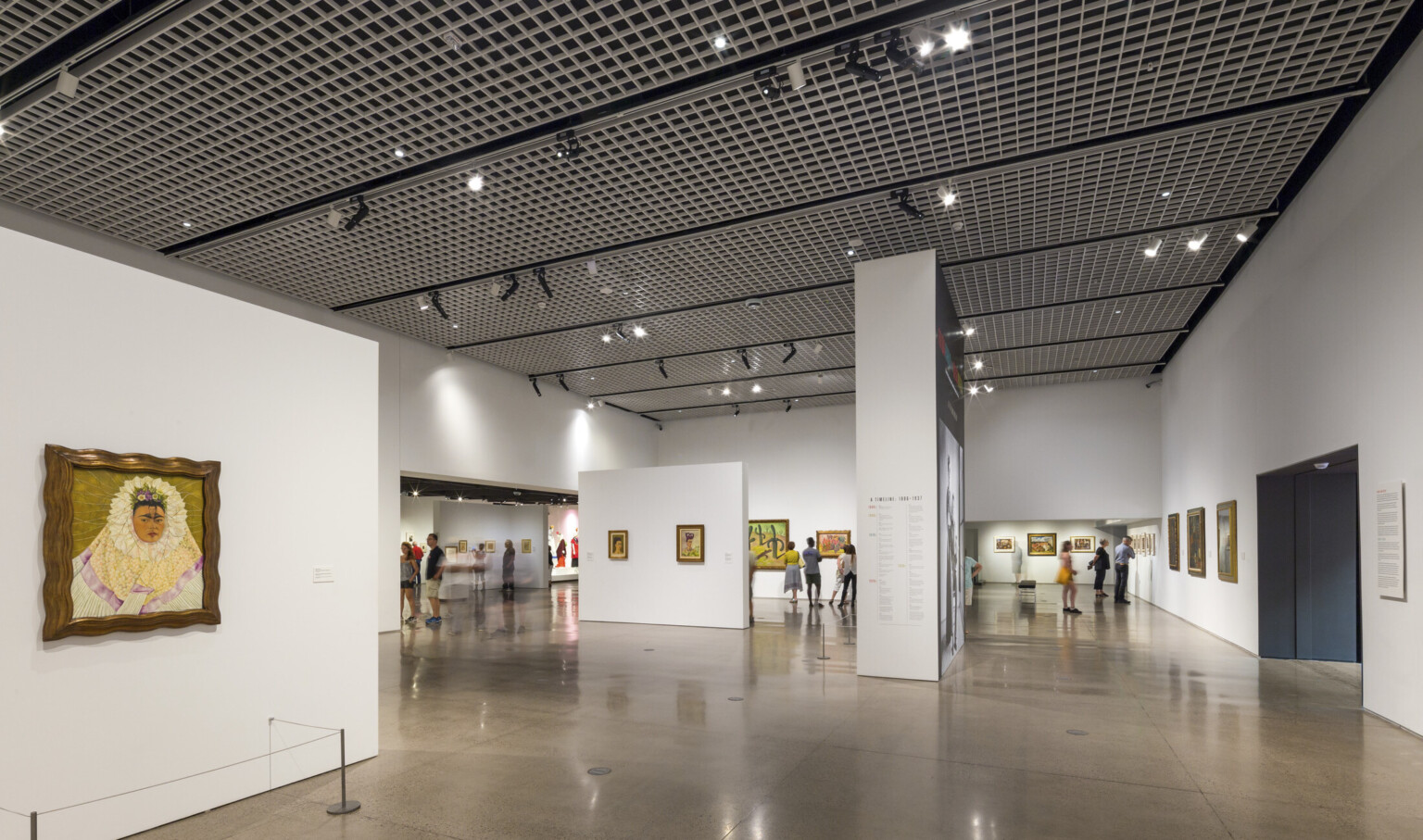
Environment for Art
To attract world-class exhibits, galleries must meet the highest standards in temperature and humidity control. Building off of our recent experience from other recent gallery renovation projects, including the Smithsonian Renwick Gallery and the Pennsylvania Academy of Fine Arts, our integrated team collaborated with the Heard Museum to make the best use of the existing infrastructure, while replacing equipment and controls to meet the exacting criteria of international exhibits. This strategy proved very successful, and the museum has welcome high caliber, world-class exhibits by artists such as Frida Kahlo and Diego Rivera.
Adaptable Technology
Contemporary exhibits increasingly include multi-media content. As part of our design for the Heard Museum, we added power and data connections overhead, concealed in the ceiling, and below the gallery space to support digital media. Artists are now able to incorporate digital media in a variety of locations, allowing for freedom of integration with the exhibit.
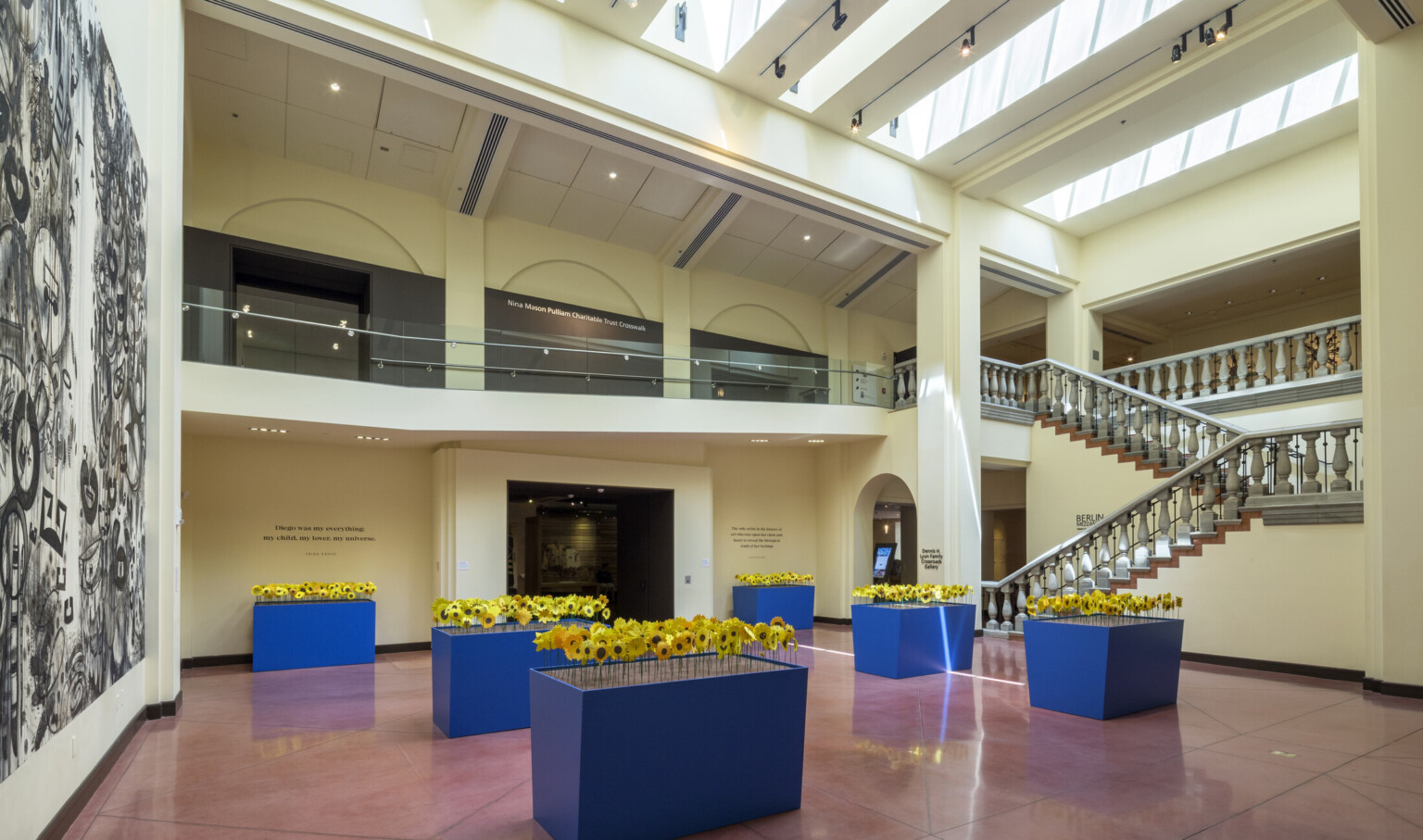
Storage for Temporary Exhibits
Traveling exhibits come with extensive storage needs. Once shipping crates are unpacked, they must be stored on-site in a secure space with temperature and humidity controls that match those of the gallery’s. For the Grand Gallery, a storage area positioned adjacent to the exhibit loading area to provide convenient access for load-in and load-out, while maintaining a connection to the same conditioned environment as the gallery. Through convenient positioning, this aids the exhibit team in setup and teardown of exhibits, which are typically on display for about a four-month duration. Additionally, storage dedicated to the temporary exhibit gallery helps keep the Heard Museum Collection separate, eliminates security concerns of traveling teams accessing central storage spaces, and aligns with the insurance requirements for the traveling exhibitions.
Minimal Design Approach
To emphasize a focus on the artwork itself, architecture of the Grand Gallery is deliberately minimal and understated. This “white box” space gives artists and curators freedom to display their work in a very pure form, without competing with a stylized architecture. The previous floor treatments, which consisted of a variety of finishes including terra cotta tile, red-stained concrete, and ground concrete, have been reduced to a single unified ground and polished concrete floor surface. Wall surfaces were designed with anticipation of repeated re-painting after each show and provides rigid plywood backing for hanging artwork, as well as a recessed reveal, which allows for easy re-finishing and touchup.
The ceiling treatments of the three previous spaces varied in response to the existing structure and construction types, as all were built as separate additions to the original museum building. The differing heights of each space provides a variety of scales to accommodate works of different sizes and types of media, from 2-dimensional paintings and photography, to sculpture and fashion. Mechanically, our team carefully supported the goal of providing a very minimal aesthetic that allows patrons to focus on the art. Utilizing existing ductwork and providing air distribution above the plane of the open ceiling means these systems have a very minimal visual impact, and further support the aesthetic of the gallery.
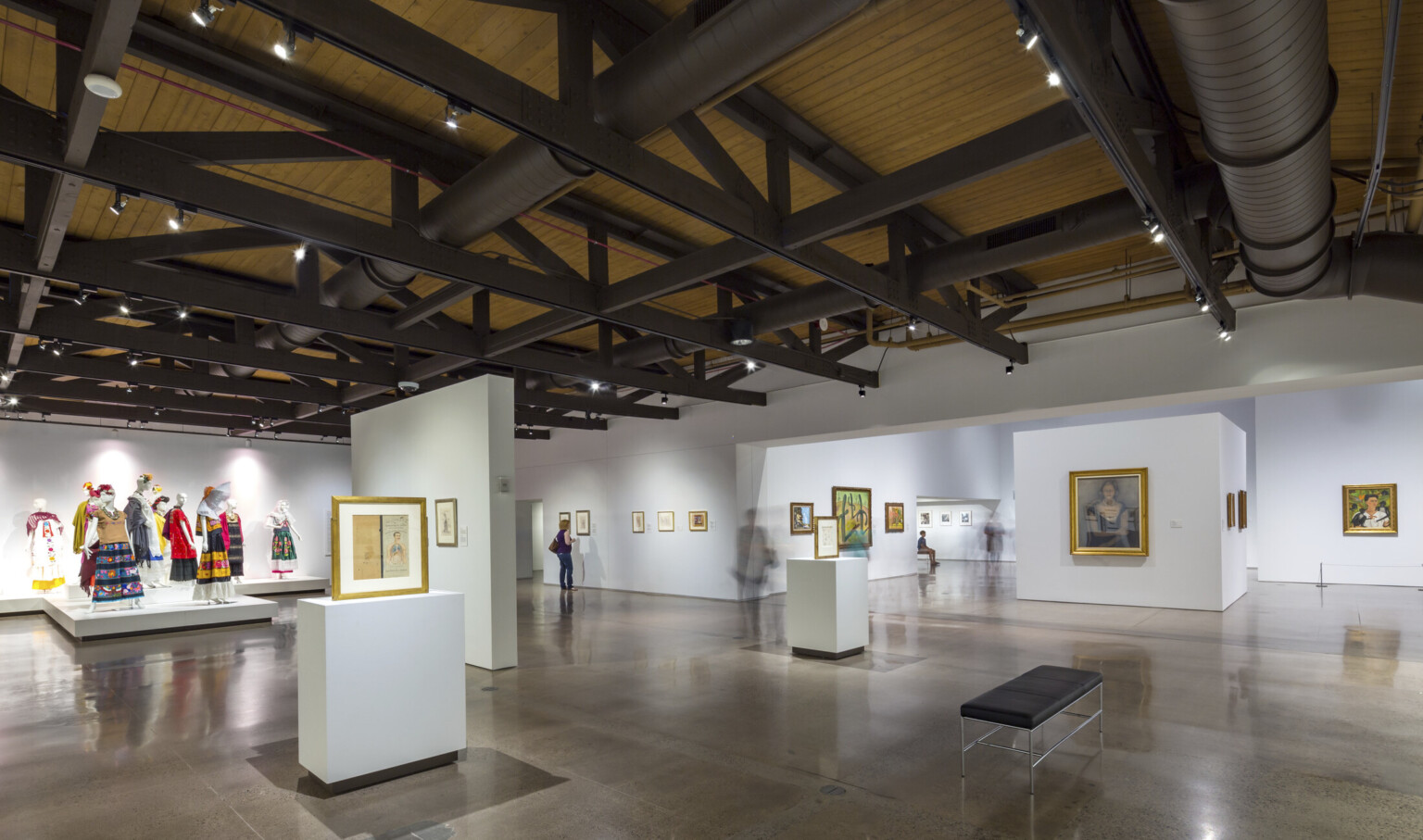
More Visitors and More Members
For the first traveling exhibition, the Heard Museum displayed the international exhibit Frida Kahlo and Diego Rivera, the only U.S. stop for this world-renowned exhibition. The show drew immense attention and praise from the community – lines wrapped around the block for people to visit this show during the summer in Phoenix!
The increase in attendance at the Heard Museum has been staggering. Over 100,000 visitors came to visit the Frida Kahlo and Diego Rivera exhibit over a roughly four-month period; this represents a 218% increase in visitors from the year prior. In addition, the number of museum memberships has increased by 198%. These incredible figures exemplify the new audiences the Heard Museum gained from a previously unengaged portion of the community. With the Grand Gallery providing a space for the voice of the today’s Native American artist, the Heard Museum has re-situated itself as a place to celebrate both the historic and contemporary story of Native American art. As each new exhibit in the Grand Gallery approaches, a re-engaged community eagerly awaits the opportunity to take part in this new through a wide range of artistic expressions, and the diverse perspectives of the Native American experience.







